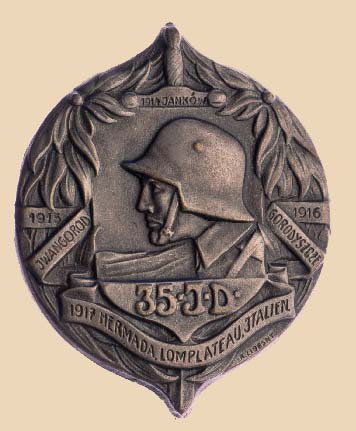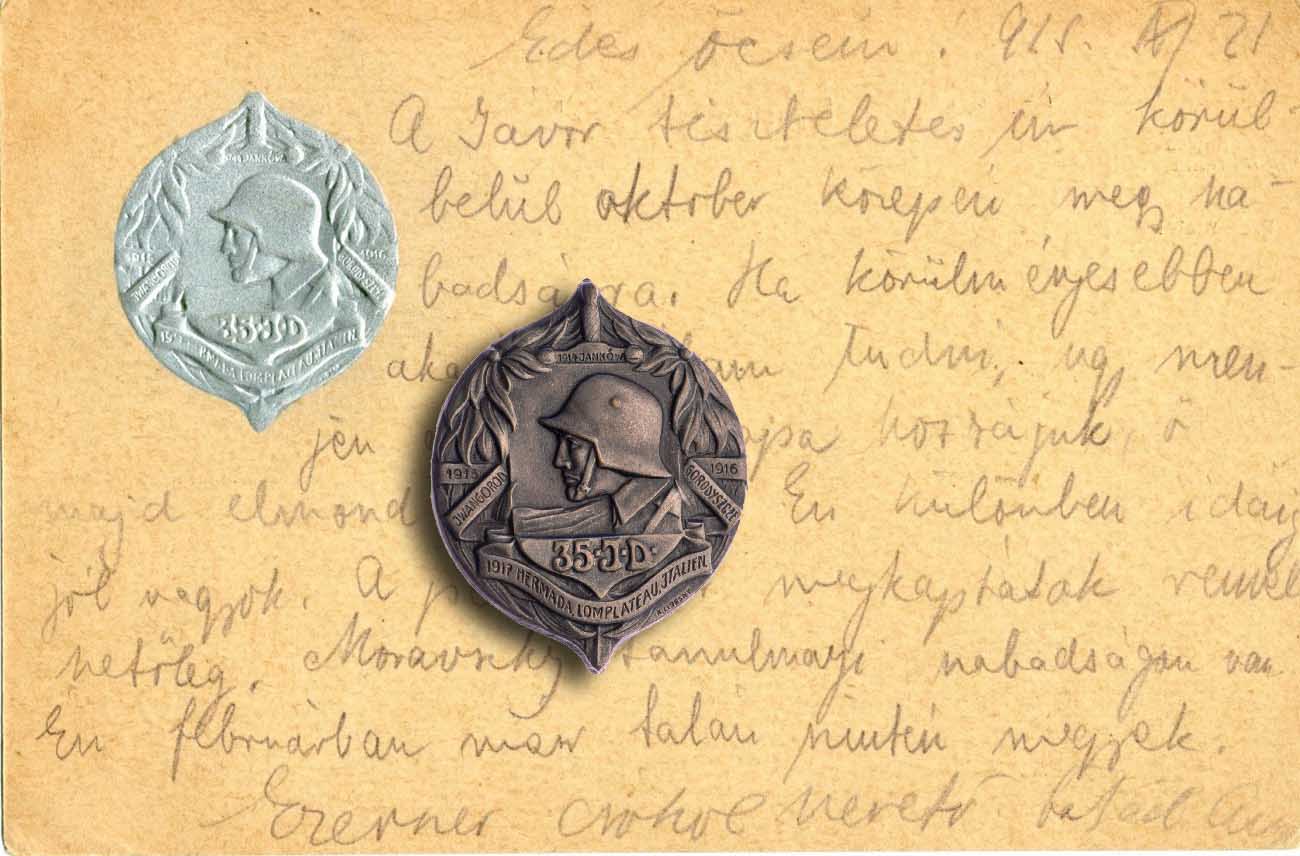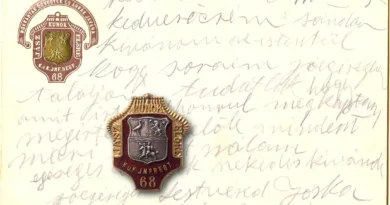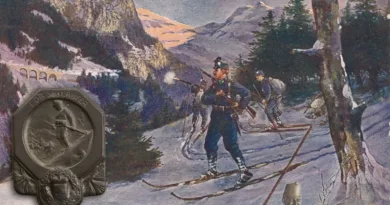ITD 35
One of my favorite badges. I think it’s a very beautiful composition, after all, I love Art Nouveau! The head in the assault helmet in the middle of the badge with the classic face is also very captivating. It is reminiscent of the portrait on the badge of the 15th Assault Battalion. The circling tape reads the well-known names of great battles: Iwangorod, a fortress taken from the Russians in the spring of 1915 near Warsaw (where the division fought in cooperation with the Germans). Another is Hermada, a plateau near the Adriatic coast on the southern edge of the Karst Plateau, which has been defended in a massive battle despite fierce Italian attacks in the 10th Battle of Isonzo. Although the armies of the Monarchy also suffered greatly from this attack, it is estimated that the losses to Italy were nearly twice as great. And they brought no results.
The badge is issued by the L.F. Pramer company in Vienna. This company designed relatively fewer badges, but they generally had a high aesthetic value similar to the one presented here. The base badge is made of tombak material, which is silver-plated. But there was also a copy made of silver plate.

The four regiments of the 35th Division (50. 51, 62 and 63) recruited from the northern and central parts of Transylvania. Its composition reflected the mixed nationality of this beautiful province: it included Hungarians, Romanians and Germans. For most of the war the division fought on the Russian front and then from the spring of 1917 on the Italian front. It was transferred to France in the summer of 1918, where it was confronted with American troops, to gradually withdraw in the fall of 1918. During this period, it was rare for Austrian soldiers to be taken prisoner by the United States troops, which is also reported by contemporary U.S. sources as a specialty.





[…] Division. I already wrote about its use in the Great War in the post about the division here. The command and cadre of the regiment was in Marosvásárhely. Half of its crew consisted of […]